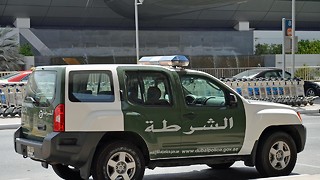Boycotting Beyonce: America’s latest refusal to accept that black lives matter
The furore over Beyonce’s new video and recent Superbowl performance is just the latest in an oppressive American saga, says Madeline Jones-Casey

Irony is not dead! A group has announced that they are planning to protest outside the National Football League’s headquarters in New York against Beyonce’s ‘racist’ halftime performance at the Superbowl, which featured dancers in black panther berets and a homemade sign demanding ‘Justice for Mario Woods’, a black victim of a police shooting in San Francisco. Various politicians and commentators have also come out branding the performance an “pathetic” and “outrageous attack”. The reason for this collective hysteria is that Beyonce made one message clear: Black Lives Matter.
When the National Sheriff’s Association, which was holding its annual legislative meeting, turned off the volume and video during Beyonce’s segment of the halftime show, they unknowingly provided a powerful metaphor. The American police establishment closing their eyes and ears to the any mention of the plight of African Americans is nothing new. Their ignorance is obvious every time another unarmed young black man was gunned down by police officers, and every time the officers walk away with no charges against them. Many have claimed that Beyonce’s performance was threatening. Surely the only reason that white people can perceive a three second black power salute during a dance routine as a threat is that they see structural power as theirs to lose.
Beyonce’s Formation video is a defiant celebration of black culture by black women and men. The mainstream media has been quick to appropriate symbols of black culture, but remained deadly silent regarding the oppression that comes with being black in America. The video recognises both of these aspects of being an African American, simultaneously celebrating black culture while denouncing the hardships forced on these communities by the racism which permeates the system. It is vital to understand that the video – and, in fact, the whole Black Lives Matter movement - is not an act of aggression: it is one of defence.
Many have commented on the graffiti displayed during the Formation music video which reads ‘STOP SHOOTING US’. This plea is not one made by a group with superior force or institutionalised power; it is the statement of a group with their backs to the wall, desperate for the killing to end. The video also features a small black boy wearing a hoodie, reminiscent of the one worn by Trayvon Martin on the night of his murder, dwarfed by a line of heavily armed white police officers. The visual representation of power inequality, of a David and Goliath confrontation, is striking. Yet, the boy’s dancing isn’t a violent gesture; it is a flagrant defiance of this very visible structural inequality. Towards the end of the video, the officers put their hands up. They surrender, not because they boy attacks them, but because he refuses to be stifled by them.
The same message of defence can be seen in the striking evocation of The Black Panther Party in Beyonce’s Superbowl half-time performance. The Black Panthers did not emerge out of a position of institutional power or supremacy, in a bid to attack weak white people. They emerged in an attempt to defend black lives and black identity, which America’s history of slavery, lynching and segregation had aimed to eliminate. In light of this, Beyonce’s performance was not a call for aggression towards the police; It was a symbolic recognition of the fact that black Americans are still being forced to defend the fact that Black Lives Matter against an institutionalised force steeped in racism.
The number of black men killed by police in 2015 was the highest in years. The graffiti on the wall that demanded ‘Stop shooting us’ was not an anti-police hate message: it was the demand for the right to life by a community who can no longer sit and watch as their sisters, brothers, fathers and sons are gunned down by members of an institution that is supposed to protect them. The rate of police-involved deaths of black males between the ages of 15 and 34 is five times higher than for white men of the same age range. It would be comforting to us to say that these figures are ‘shocking’ but, the fact is, they aren’t. Shock was what we felt when a video emerged of unarmed Eric Garner being strangled to death by police officers for selling unlicensed cigarettes in New York. However, this was soon followed by the murder of unarmed teenager Mike Brown by officer Darren Wilson in Missouri, and then by the murder of twelve-year old Tamir Rice, who was shot to death by police as he played in a park in Ohio, and then the killing of Rumain Brisbon, whose pill bottle was mistaken for a weapon by the officers that shot him in Phoenix. As the deaths of young, unarmed African Americans at the hands of white police officers amassed, shock gave way to the realisation that the problem lies not with police negligence but with institutional racism.
When we consider the fact that being black in America has meant being abandoned by the government after a natural disaster, being killed by police while unarmed and making up almost half of the USA’s incarcerated population, the boycott of Beyonce because of the Formation video or her Superbowl performance is shown to be nothing less than white America’s latest refusal to accept the fact that Black Lives Matter. In the end, it is far easier to turn off the volume, brand Beyonce a “racist” and organise a protest against her, than it is to address the fact that the ‘land of the free’ still allocates freedom on the colour of your skin.
 News / Newnham postgrads referred to homeless charities as College runs out of rooms31 July 2025
News / Newnham postgrads referred to homeless charities as College runs out of rooms31 July 2025 Arts / William Morris’ little-known labours in Cambridge25 July 2025
Arts / William Morris’ little-known labours in Cambridge25 July 2025 Lifestyle / Break-ups in the bubble31 July 2025
Lifestyle / Break-ups in the bubble31 July 2025 News / Lucy Cav secures £47m loan to expand student accommodation30 July 2025
News / Lucy Cav secures £47m loan to expand student accommodation30 July 2025 Theatre / One year, many stages: the fresher actors behind Cambridge theatre31 July 2025
Theatre / One year, many stages: the fresher actors behind Cambridge theatre31 July 2025








